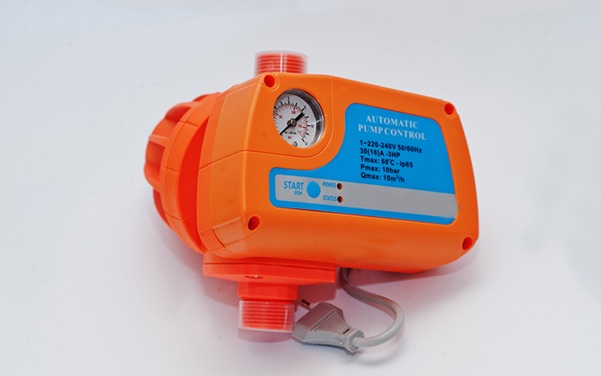Keeping workplaces safe requires active systems that detect hazards before they escalate. In industries where flammable, toxic, or oxygen-deficient gases exist, which becomes why using reliable gas detection equipment becomes necessary. Whether deployed in manufacturing plants or confined spaces, tools like a fixed gas detection system play a vital role in reducing operational risks. This article breaks down five key features that make gas detection systems effective in supporting workplace safety.
1. Continuous Monitoring for Early Warning
Detecting gas leaks early reduces exposure and prevents life-threatening accidents. Fixed gas detection systems offer uninterrupted surveillance, keeping personnel informed in real-time. These systems operate without manual prompts, providing consistent data even in areas with high traffic or unstable atmospheric conditions.
Sensors actively scanning the air can detect even trace levels of hazardous gases. When thresholds reach critical points, the system immediately triggers visual and audible alerts. This rapid response window gives workers enough time to evacuate or follow emergency protocols.
Consistent monitoring improves risk mitigation, especially in enclosed or hard-to-access environments. Maintenance teams get alerts before dangerous levels accumulate, ensuring timely intervention. Fixed installations are especially useful in places such as chemical processing units, where manual inspection proves inefficient and unsafe.
2. Real-Time Data Transmission and Alerts
Sending live updates improves decision-making and supports emergency response. Advanced gas detection equipment integrates with central control systems, broadcasting real-time data to supervisors or external safety personnel.
Wireless modules or digital networking options provide flexibility in configuration. Supervisors monitor gas readings remotely, identifying patterns or sudden surges without being on-site. This setup becomes helpful in large-scale facilities where full visibility proves difficult to maintain.
Alongside on-site alarms, some systems send SMS, email, or control room alerts. These channels ensure no critical update goes unnoticed. With immediate data available, response teams can isolate affected zones or halt operations until safety resumes.
Having access to real-time alerts ensures incidents receive prompt attention, reducing injury and environmental impact.
3. Multi-Gas Detection Capability
Industrial environments rarely contain a single gas hazard. A reliable gas detection system should track multiple gases simultaneously. Whether dealing with combustible gases, carbon monoxide, hydrogen sulphide, or oxygen depletion, comprehensive detection ensures broader protection.
Modern equipment features multi-sensor designs that work independently. Each sensor calibrates for a specific gas, providing accurate readings without interference. The system continues functioning even if one sensor experiences faults, maintaining uninterrupted protection.
Multi-gas systems also streamline installation by covering more hazards with fewer devices. This reduces clutter in confined areas and simplifies maintenance tasks. Consolidated detection helps compliance teams meet industry regulations without overcomplicating infrastructure.
Investing in multi-gas detection reduces blind spots and boosts workplace safety, especially in high-risk sectors like oil refining, pharmaceuticals, and waste management.
4. Rugged Construction for Harsh Environments
Gas detection equipment must perform reliably under demanding conditions. Many industries expose devices to dust, moisture, vibration, or temperature extremes. Substandard tools risk malfunctioning, leaving personnel vulnerable.
Fixed gas detection systems designed for industrial use feature protective enclosures. These shield internal components from corrosion, impact, or external interference. Weather-resistant casings make them suitable for outdoor deployment, while flameproof models work well in explosive environments.
Durability increases lifespan, reducing replacement frequency and operational costs. Technicians also face fewer malfunctions, ensuring consistent performance without repeated recalibration. In safety-critical zones, dependable equipment avoids costly shutdowns and workplace hazards.
Using rugged systems ensures uninterrupted protection regardless of external conditions, strengthening risk control frameworks.
5. User-Friendly Interface and Diagnostics
Simple interfaces help operators and technicians respond quickly. Equipment with intuitive control panels, status lights, or digital screens reduces training time and improves efficiency. Clear icons, numeric displays, and gas concentration indicators eliminate ambiguity during emergencies.
Many systems include automatic self-diagnostics. They continuously assess sensor health, power supply, and connectivity. When faults occur, error codes appear immediately, alerting users before system failure.
Easy-to-read data logs support incident reporting and compliance checks. Historical trends help teams refine safety practices or identify recurring issues. Remote calibration and testing functions reduce downtime during servicing, supporting proactive maintenance.
Simplified operation and diagnostics make equipment more accessible to all levels of staff, ensuring faster adoption and more reliable safety protocols.
Final Thoughts
Installing effective gas detection equipment reduces risks, improves emergency response, and supports regulatory compliance. With features like continuous monitoring, real-time alerts, multi-gas capability, rugged housing, and intuitive design, a fixed gas detection system offers comprehensive safety coverage for any critical workplace.
Need gas detection equipment built for your safety protocols? Contact Ansac Technology for reliable fixed gas detection systems in Singapore that deliver dependable performance across industrial settings.













